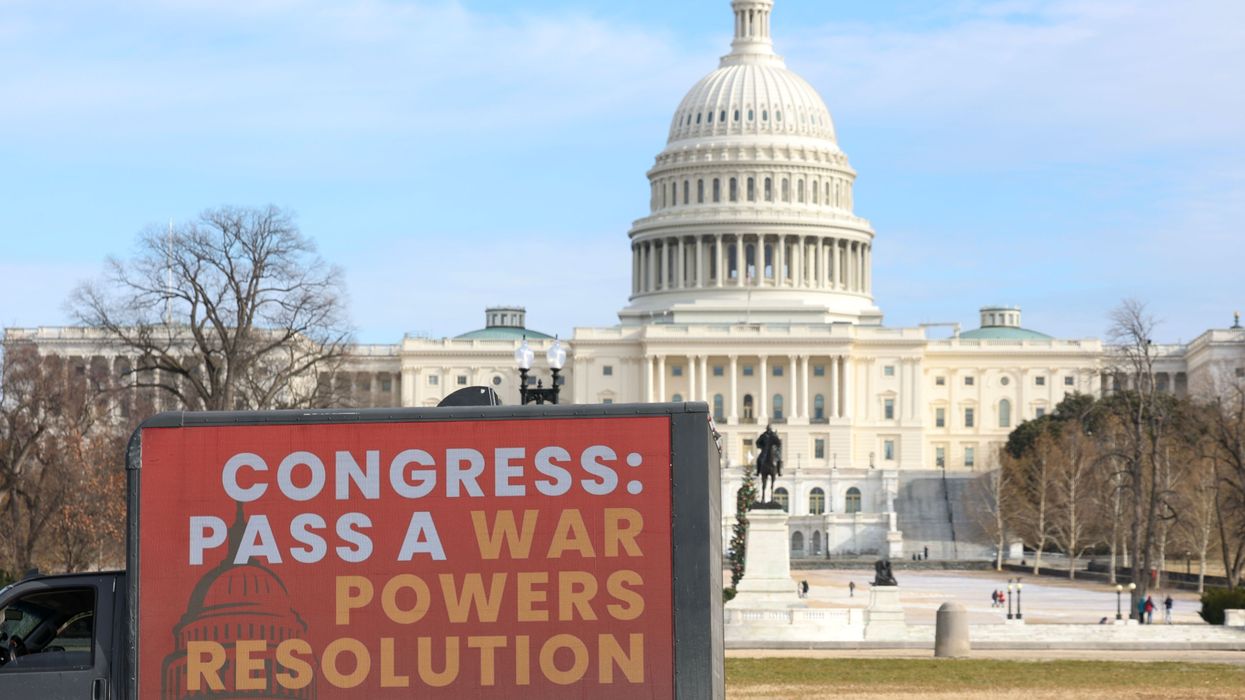Today the Bush Administration took another step toward finalizing a
commercial leasing program for oil shale on some of the nation's most
pristine public lands and released a final programmatic environmental
impact statement for commercial oil shale production on more than 2
million acres of public lands in Wyoming, Colorado and Utah.
In another parting gift to Big Oil, the Bush Administration released a
four-volume environmental impact statement that omits information about
the potential technologies that would be employed and the environmental
consequences of this highly energy- and water- intensive fossil fuel to
global warming and to endangered species and Western communities that
depend on scarce Western water.
"The final EIS
reveals that concerns about the unsustainability of this fuel source
are shared not just by environmentalists who have been following this
issue for years, but by other federal agencies, local governments, and
thousands of citizens," said Amy Atwood, senior attorney with the
Center for Biological Diversity. "Oil shale development is another
dirty fossil fuel and extracting it would deal a disastrous blow to any
hope of reducing atmospheric carbon dioxide pollutant levels to below
350 parts per million. Oil shale extraction is also an inappropriate
use of our public lands, which must serve as refugia for species struggling to survive in the face of global warming."
Federal agencies, including the U.S. Fish and Wildlife Service, U.S.
Department of Agriculture, U.S. Park Service, and U.S. Bureau of
Reclamation, all have raised concerns about the environmental impacts
of opening up 2 million acres of public lands to oil shale development.
They include questions about the harm it would inflict on global
climate, endangered and threatened species, wilderness areas, air and
water quality, water rights, and the lack of information about what
technologies would be used.
Oil shale is one of
the world's most greenhouse gas-intensive energy sources. Producing oil
from shale requires several times more energy than conventional oil
production. Depending on the technology, it also could consume vast
quantities of water in an arid region where water is becoming even more
scarce due to climate change.
The Center for
Biological Diversity is dedicated to ensuring that atmospheric carbon
dioxide pollutant levels are reduced to below 350 ppm, which leading
climate scientists warn is necessary to prevent devastating climate
change. Further development of greenhouse gas-intensive energy sources,
including oil shale, tar sands, and coal-fired power plants, is
fundamentally incompatible with achieving this goal. If greenhouse gas
emissions are not immediately reduced, the current atmospheric carbon
dioxide level of 385 ppm will rise to approximately 500 ppm by
mid-century, triggering mass wildlife extinctions, catastrophic global
weather and ecosystem changes, and tragic human suffering.
"It is time for the Bush Administration to wake up and realize that oil
shale development is nothing more than a pipe dream that has no part in
any rational energy plan for the future," Atwood said. "Congress should
take action and permanently halt the Bush administration's latest
attempt to promote this destructive and impractical fossil fuel
development."
Oil Shale Facts
* It's dirtier than the dirtiest coal
* It requires more land to produce than conventional oil
* It's more water-intensive than farming in the desert
* There's been no significant production of U.S. shale oil for at least 30 years
Shale Mining is Among the Filthiest Ways to Produce Energy
There are two kinds of shale-oil extraction methods, neither yet proven
to work. The first involves underground, open-pit, or strip mining, as
with coal. Unlike coal, though, oil-shale production requires
additional steps of pulverizing the shale and then roasting it in giant
kilns to drive off the oil. The process requires disposal of all of the
original rock, which is 30 percent greater in volume due to
pulverizing. About a ton of rock needs to be crushed, heated, and
dumped to produce just 15 gallons of oil.
The
second method involves drilling tightly spaced wells across thousands
of acres and injecting heat into the ground for about four years. Oil
driven from the rock is then pumped to the surface. To prevent the
newly freed oil and other toxic substances from percolating deeper
underground, the entire operation is surrounded by another set of holes
pumped with supercooled fluids in an attempt to create an underground
barrier of ice during the operation. Oil-shale lands would be a maze of
pipes and pumps, and these complex systems could not produce
significant amounts of oil before 2037, at the earliest.
Shale Oil Is Worse Than Crude Oil in Contributing to Climate Change
Producing shale from oil would be dirtier than the dirtiest coal,
because it takes so much energy just to squeeze a barrel of oil out of
stone. Compared to crude oil, every barrel of shale oil sends 50
percent more carbon dioxide into the atmosphere at a time when we must
be emitting far less carbon dioxide, not more. Fuel efficiency, public
transit, better urban planning and a new generation of vehicles are
better investments to reduce foreign imports over the next 30 years.
The Green River Basin Is an Outdoor American Treasure
Backed by the Bush administration, oil companies want access to
millions of acres of public lands for shale mining in Colorado, Utah,
and Wyoming. These are lands that are currently open to the public for
top-quality outdoor recreation. They include wonderful trout fishing,
America's healthiest elk herds, rare plants found nowhere else in the
world, and many endangered and threatened species. These are also areas
that support rural lifestyles passed down for generations. This is no
place to develop strip mines, oil refineries, power plants, and all of
the highways, pipelines, power lines and dumpsites to support them.
There Is Not Enough Colorado River Water for Meaningful Production
The Colorado River supplies drinking water to about 30 million people
and irrigates about 3.5 million acres of farmland. Many years, the
river is so taxed it does not have a drop left by the time it reaches
the sea. Reservoir levels are falling to record low levels. Climate
change predictions call for less rain and more evaporation. All 15
million acre-feet of the Colorado River's annual flow have been fought
over and carefully allocated.
All significant
shale oil sits in the Colorado River Basin. According to Department of
Energy figures, replacing current OPEC oil imports with shale oil would
cost us up to 1.4 million acre-feet of Colorado River basin water every
year. That is enough to drain Lake Mead dry in less than 10 years.
Meanwhile, the West is facing water shortages as a result of climate
change and population growth.




